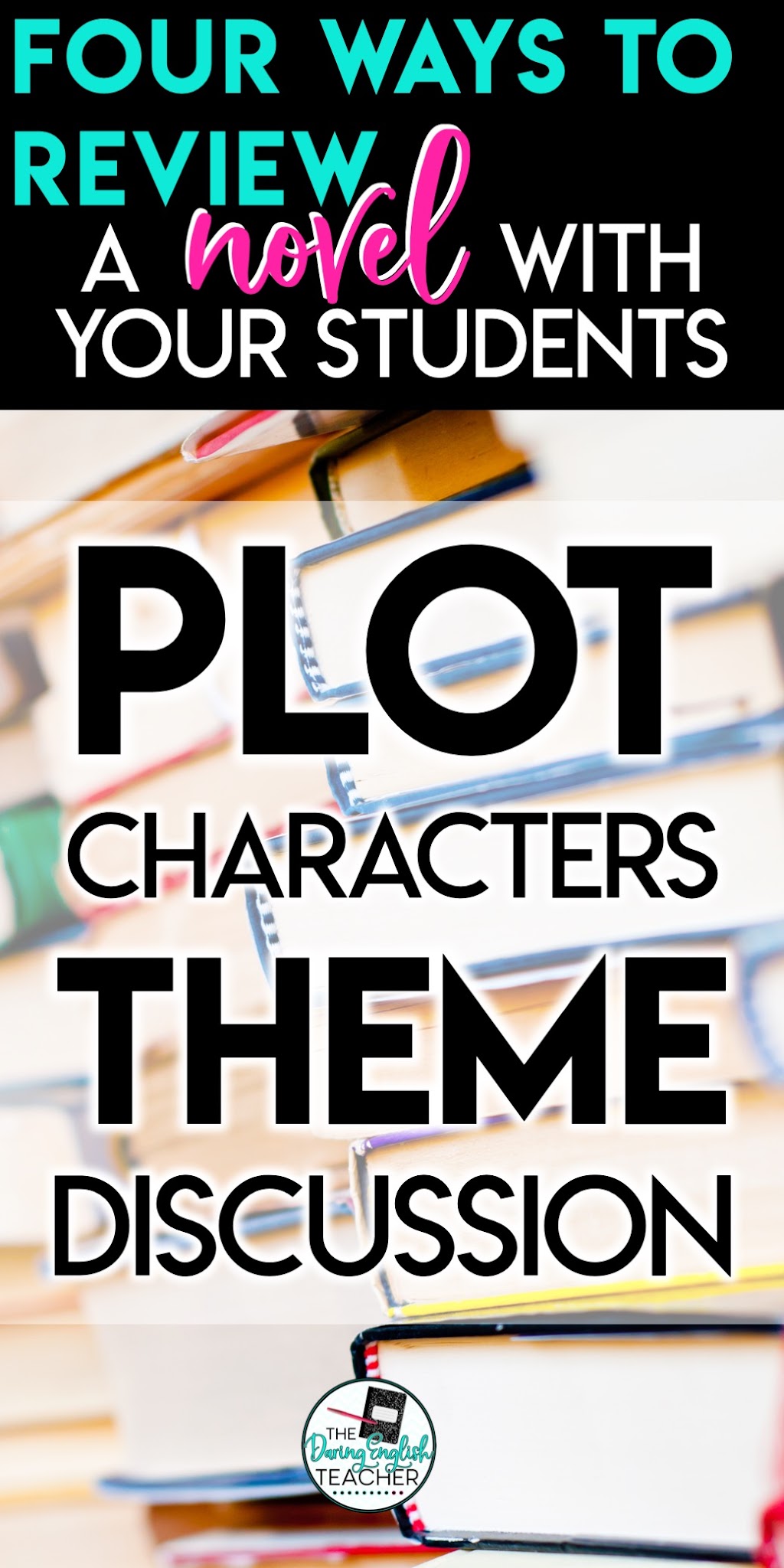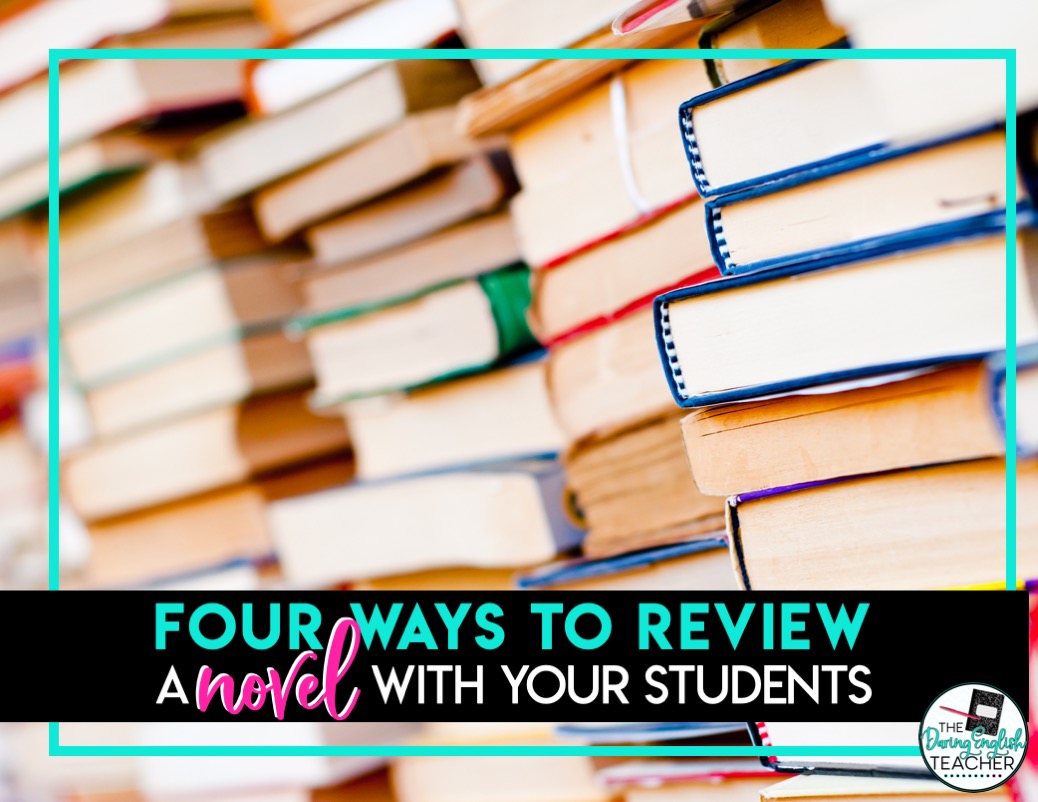Reading a whole novel over the course of a few weeks can leave students drained and exhausted. By the time students complete the book and go to take the final exam or quiz over the book’s contents, they may have forgotten some essential elements. If this sounds familiar, you will love these novel review activities!
Take the time to review each novel with your class before assigning the final test. When I plan my schedule, I usually have students take the test after they turn in their essays. Not only does this help students review, but it also gives me a class day to grade essays! Here are four critical topics to cover in your class novel review.
Four Novel Review Activities for Secondary ELA 
Novel Review Activities: Plot Sequence
Analyzing the specific order of events in a narrative will outline some specific points in the plot. Identifying the exposition, rising action, climax, falling action, and resolution will help students review and remember the critical incidents of the novel’s plot.
One way I like to do this is through a jigsaw activity. Students will work together in small groups, and each group will identify key events from a specific part of the novel. For example, the exposition group will come up with the five most important events that happen during the exposition and share them aloud with the class.
Novel Review Activities: Know the Characters
Being aware of the central and supporting characters of a novel will help provide context for the plot. Readers should know descriptions of characters and the relationships that exist between characters.
- How does each character play a unique role in the novel?
- How do the actions of a character advance the plot?
- Do any characters fit a specific literary archetype?
In the classroom, you can answer these questions with your students.
Or, if you are looking for a little more movement in the classroom, students can complete a gallery walk review. Write the names of all of the major characters on butcher paper or chart paper, and have students circle throughout the room in small groups.
Each group will need to add several details and a quote about the character. (This is also an excellent time for an impromptu direct vs. indirect characterization mini-lesson).
Novel Review Activities: Themes
What’s the big idea? What purpose did the author have in writing this novel? Asking questions like these will help students think about the sequence of the plot. They can assist with analyzing character development and any lessons learned. Having a strong sense of a book’s central theme will help in writing a coherent essay on the novel. To help students review themes, I love assigning Mind Maps. Students identify the theme and add in quotes, words, and illustrations that help to show how the author developed the theme.
I like to use this theme teaching unit to both teach and review theme with my students!
Novel Review Activities: Final Class Discussion
Give your students a final chance to talk about the book together. This last discussion should be a time to weed out any lingering confusion while giving students the opportunity to ask questions. Student engagement will help you gauge the level of understanding held by your students, and it will give you the chance to assert any last-minute clarity or instruction. One classroom discussion activity that I love is a fishbowl discussion.
For more reaching, check out this post on 10 Ways to Review a Novel or Short Story.
Ready to Teach a Novel? Check out this Novel Activities Unit for Any Novel
Engage your students all year long with these activities for any novel (also works for short stories too)! This secondary ELA resource is filled with 32 novel activities that you can use before, during, and after reading any novel! Plus, it includes plenty of novel review activities!
These novel activities are perfect for a class novel study, independent reading projects, lit circles, and more! This resource includes multiple teacher instruction pages to help you seamlessly integrate these novel activities in your classroom, and it is organized into four sections: pre-reading, while reading, differentiated writing tasks, and after reading.
__________
Join my email list!
Subscribe to receive updates from The Daring English Teacher.
Thank you for subscribing! You will soon receive updates, freebies, and teaching ideas.
There was an error submitting your subscription. Please try again.
Please sign me up
You will not receive spam, and you can unsubscribe at any time.
Powered by ConvertKit



